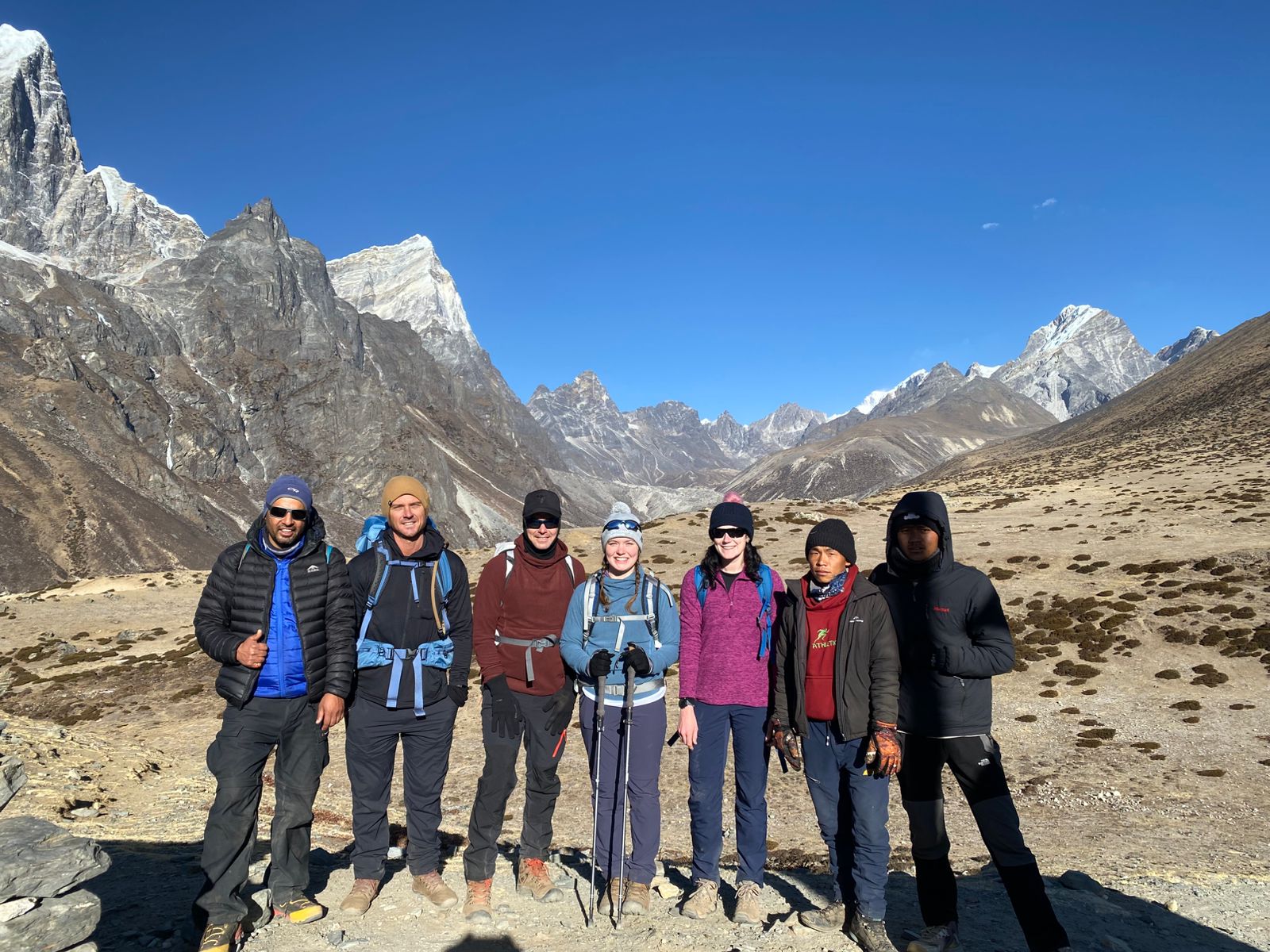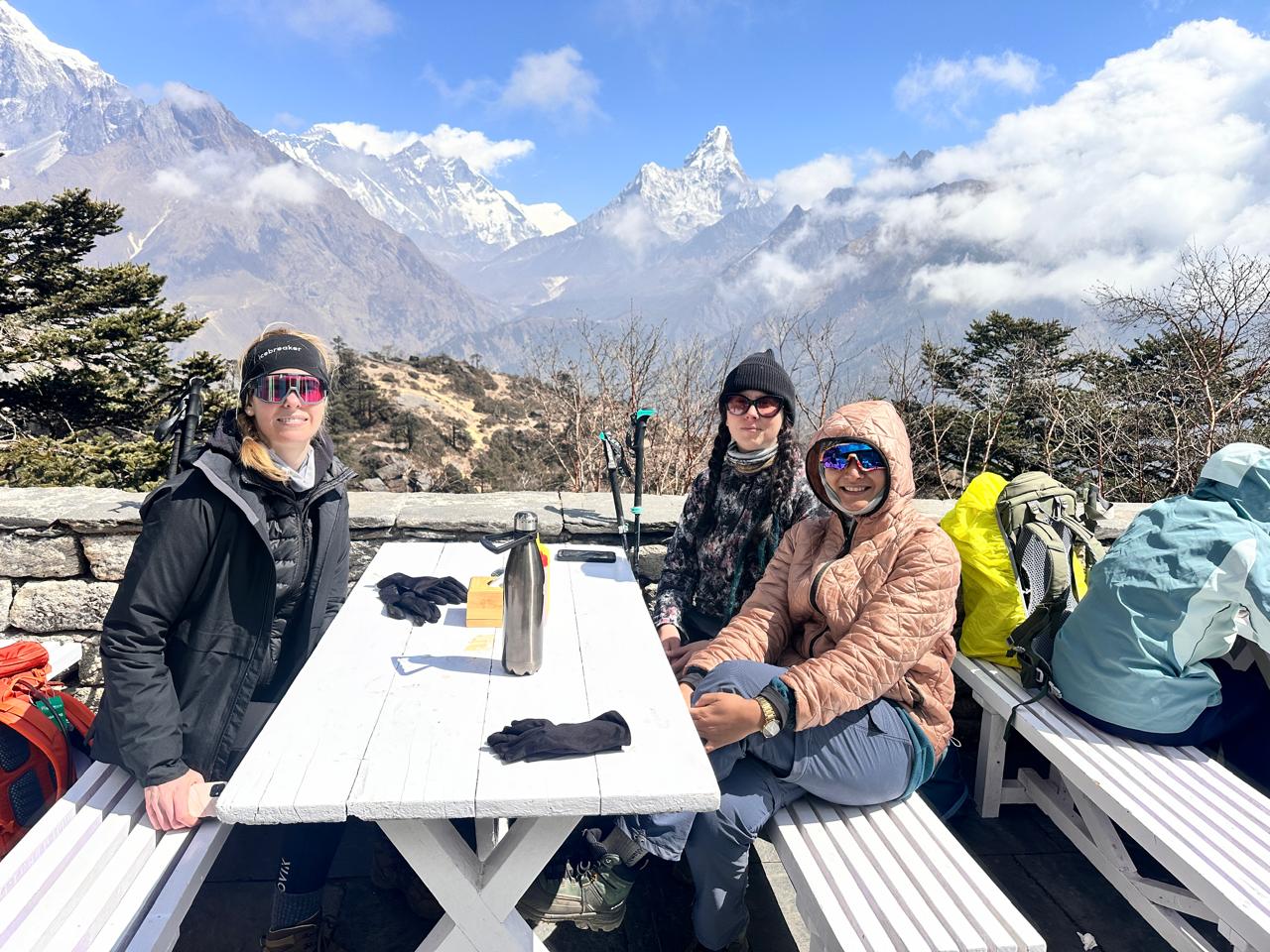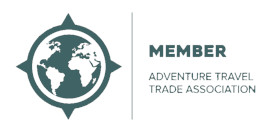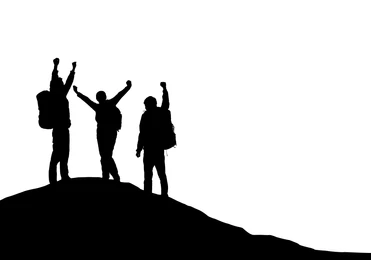Everest Base Camp - All You Need To Know
The most common questions answered here
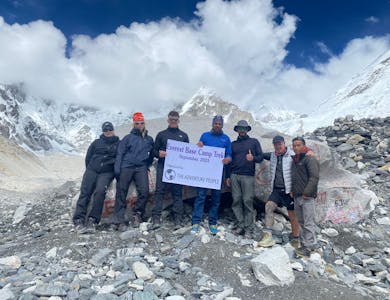
Introduction
Few adventures are as iconic as the trek to Everest Base Camp (EBC). Standing beneath the world’s highest peak at 5,364 metres is a moment that draws travellers from across the globe – hikers, dreamers, and adventurers alike. The journey to Base Camp isn’t just about reaching a destination; it’s about the challenge, the culture, and the connection with the mighty Himalayas.
The Everest Base Camp Trek follows ancient trails through Sherpa villages, past fluttering prayer flags and Buddhist monasteries, across suspension bridges, and up into the heart of the Khumbu region. Along the way, trekkers experience the warmth of Nepalese hospitality, breathtaking mountain views, and the satisfaction of earning every step of the journey.
If you’re thinking about taking on this world-famous trek, this guide answers all the most common questions – from when to go and what to pack, to what the tea houses are really like.
Everest Base Camp Trek FAQs
When is the best time to go?
The two main trekking seasons are spring (March–May) and autumn (late September–November).
Spring offers mild weather, rhododendrons in bloom, and generally clearer mornings.
Autumn is known for crisp air, stable conditions, and incredible visibility after the monsoon clears.
Winter (December–February) is possible for experienced trekkers but expect cold nights and snow. Summer (June–August) is monsoon season, so trails can be wet and cloudy.
How long do we trek each day?
Most trekking days range from 5 to 7 hours of walking.
Some days are shorter to allow for acclimatisation, while others, such as the climb to Namche Bazaar or the hike to Kala Patthar, can feel more demanding due to altitude.
Your guide will pace the group sensibly to keep everyone comfortable and safe.
See All Everest Base Camp Treks >>
How fit do I need to be?
You don’t need to be an athlete, but a good base level of fitness and endurance is essential. The trek involves continuous uphill and downhill walking on uneven terrain at high altitude.
We recommend:
Regular hiking or hill walking before your trip
Cardiovascular exercise (running, cycling, swimming) several times a week
Practice hikes carrying a daypack
With proper preparation, most people in good health can complete the trek.
What should I pack?
A good packing list includes:
Clothing: moisture-wicking base layers, fleece or down jacket, waterproof shell, trekking trousers, gloves, hat, and thermal socks
Footwear: well-worn trekking boots with good ankle support, plus lightweight shoes for evenings
Gear: sleeping bag (rated to -10°C), trekking poles, water bottles, head torch, sunglasses, and sunscreen
Essentials: first-aid kit, blister plasters, hand sanitiser, lip balm, and water purification tablets
Your main duffel bag is carried by porters, while you only carry your daypack with daily essentials.
What if the weather is bad?
The Himalayas are unpredictable. Weather can change quickly, especially at higher elevations.
Rain, snow, or wind can occasionally delay flights to Lukla or alter trekking plans, but your local guides are experienced in adjusting itineraries safely. Flexibility is key – and sometimes, cloudy days can make the mountains look even more dramatic.
How do I know if I have altitude sickness?
Altitude sickness (AMS) can affect anyone, regardless of age or fitness.
Common early symptoms include:
Headache
Nausea or loss of appetite
Fatigue
Dizziness or disturbed sleep
Most treks include acclimatisation days at Namche Bazaar (3,440m) and Dingboche (4,410m).
If symptoms worsen, guides will ensure you descend and receive proper care. Staying hydrated, ascending slowly, and avoiding alcohol help prevent AMS.
What are the tea houses like?
Tea houses are simple, family-run lodges found along the route. They provide:
Basic but comfortable rooms with twin beds and shared bathrooms
Common dining areas with wood stoves for warmth
Plenty of hot tea, hearty meals, and friendly hospitality
In lower villages, you’ll find cosy lodges with electricity and Wi-Fi. Higher up, facilities become more basic – but that’s part of the charm.
See All Everest Base Camp Treks >>
Is there Wi-Fi on the trek?
Yes, though don’t expect it everywhere.
Many tea houses offer Wi-Fi for a small fee, powered by solar or satellite connections. It can be slow and unreliable, especially at higher altitudes. Mobile data (NCELL or NTC) may work intermittently up to Tengboche or Dingboche.
Most trekkers use the opportunity to unplug and enjoy the mountains.
What is the food like?
Meals are simple but filling, with a mix of Nepali and Western dishes.
Typical options include:
Dal Bhat: rice, lentil soup, and vegetable curry (the Nepali staple)
Noodles, pasta, fried rice, or potatoes
Pancakes, eggs, and porridge for breakfast
Fresh meat becomes scarce at higher altitudes, so most trekkers stick to vegetarian meals after Namche Bazaar. Hot drinks – tea, coffee, lemon ginger honey – are available everywhere.
How many people are in each group?
Group sizes typically range from 6 to 12 trekkers, small enough for personal attention yet sociable for shared experiences.
Private and tailor-made departures are also available for couples, families, or friends who prefer to trek at their own pace.
What permits do I need?
Two main permits are required:
Sagarmatha National Park Entry Permit
Khumbu Pasang Lhamu Rural Municipality Permit
These are usually arranged by your local operator or guide before or during the trek.
Do I need travel insurance?
Yes – it’s essential.
Your insurance must cover high-altitude trekking (up to 5,500m) and emergency evacuation by helicopter. Always carry a printed copy of your policy and emergency contact details.
How do I get to the start of the trek?
The trek begins with a short but scenic flight from Kathmandu to Lukla (2,860m) – one of the most thrilling airport landings in the world!
From there, you’ll walk through Phakding, Namche Bazaar, Tengboche, Dingboche, Lobuche, and Gorak Shep before reaching Everest Base Camp.
Can I charge my phone or camera?
Yes, most tea houses have charging points (for a small fee).
Bring a universal adaptor and power bank – electricity can be limited, especially higher up.
Can I do it solo?
Solo trekking in the Everest region is no longer permitted for foreigners. You must trek with a registered guide or through a licensed company – which is safer, more enjoyable, and better supports local communities.
How much does it cost?
Typical guided treks to Everest Base Camp cost between £1,200 and £2,000, depending on group size, accommodation style, and inclusions.
Flights, permits, meals on the trail, and porter services are often bundled in.
Budget a little extra for tips, snacks, Wi-Fi, and hot showers along the way.
Final Thoughts
The Everest Base Camp Trek is more than a bucket-list goal – it’s a journey that leaves a lasting impression. Whether it’s the sunrise over Ama Dablam, the laughter in a mountain lodge, or the moment you stand beneath the Khumbu Icefall, every step brings you closer to understanding why this route is one of the world’s greatest adventures.
If you’re ready to take on the challenge, explore our latest Everest Base Camp treks at
👉 The Adventure People – Everest Base Camp.

